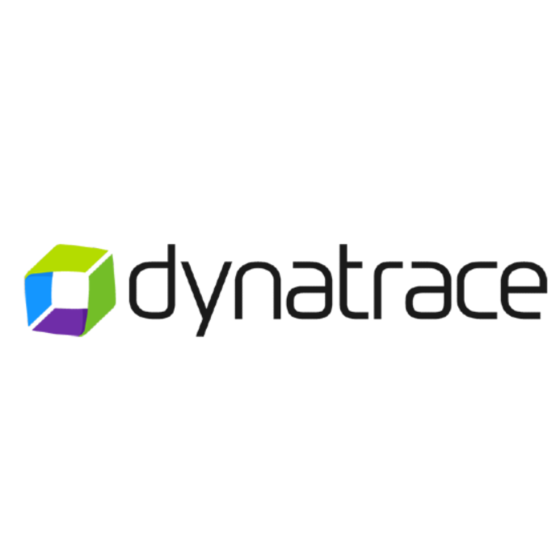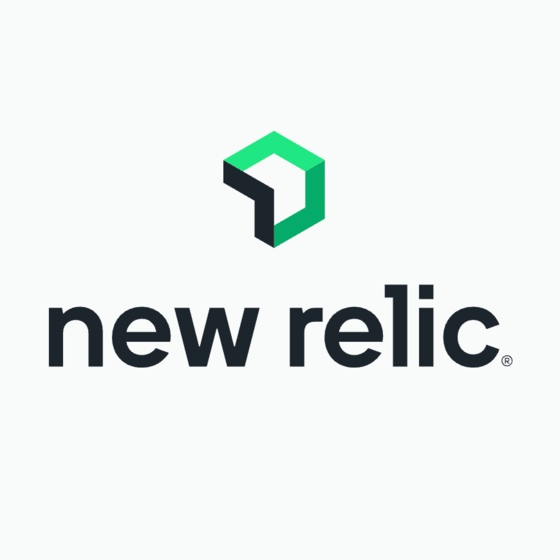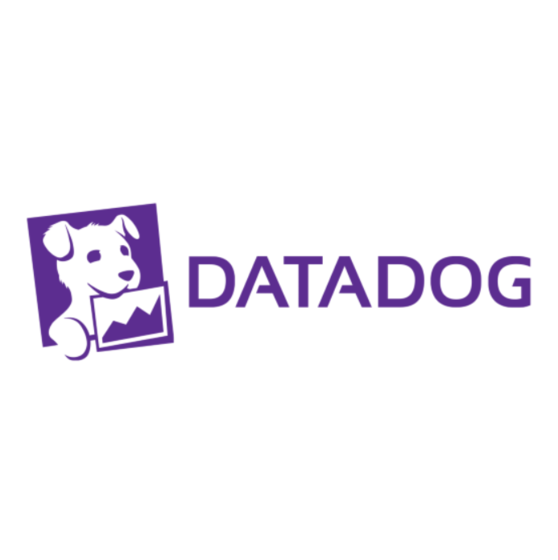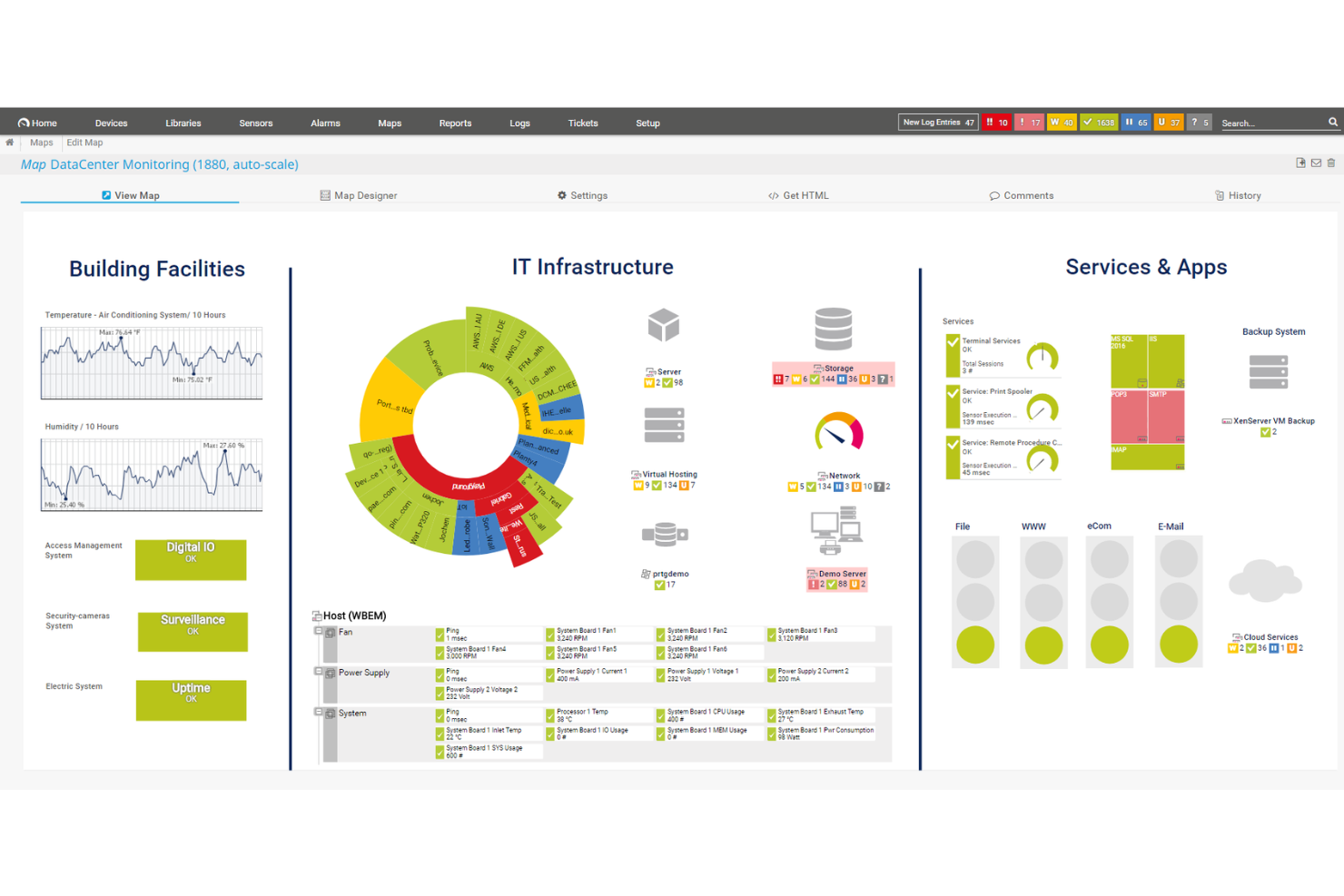10 Best System Monitoring Tool Shortlist
Here's my pick of the 10 best software from the 24 tools reviewed.
Our one-on-one guidance will help you find the perfect fit.
Navigating the digital landscape can be intricate, but system monitoring tools simplify the journey. By leveraging automation and predefined templates, these tools efficiently manage endpoints, ensuring optimal performance. With features like SNMP for communication, automatic threshold settings, and network mapping, potential outages are swiftly identified and managed.
They're a godsend for managed service providers who aim to enhance response times, streamline ticketing, and offer a user-friendly experience. For any SaaS business, it's about more than just monitoring; it's about optimizing every node of the network.
What Is a System Monitoring Tool?
A system monitoring software or tool is a software application designed to oversee and analyze the operations of computer systems, networks, and infrastructures. It consistently checks various parameters, such as CPU usage, disk activity, network traffic, and memory consumption, offering a real-time overview of system health and server performance.
IT professionals, network administrators, and DevOps teams primarily use these tools to identify, diagnose, and rectify any anomalies or malfunctions, ensuring the smooth and efficient functioning of their technology environments. This proactive approach aids in minimizing system downtime, optimizing resource utilization, and guaranteeing uninterrupted services for end-users.
So, in a nutshell, a system monitoring tool is your watchdog, vigilantly overseeing your digital operations and ensuring everything runs as it should. With it, you can swiftly identify pain points and keep your operations smooth and efficient.
Best System Monitoring Tools Summary
| Tool | Best For | Trial Info | Price | ||
|---|---|---|---|---|---|
| 1 | Best for holistic system oversight | Free trial available | From $2,149/year | Website | |
| 2 | Best open-source solution | Free demo available | Free to use (with subscription options available) | Website | |
| 3 | Best for AI-driven full-stack monitoring | 15-days free trial + free demo | Pricing upon request | Website | |
| 4 | Best for comprehensive IT infrastructure monitoring | 30-day free trial | From $20/user/month (billed annually) | Website | |
| 5 | Best for real-time error tracking | Free plan + demo available | From $26/month (billed annually) | Website | |
| 6 | Best for infrastructure health insights | Free plan + demo available | Pricing upon request | Website | |
| 7 | Best for application performance metrics | Free trial available | From $15/user/month (billed annually) | Website | |
| 8 | Best for scalable monitoring solutions | Free trial available | Pricing upon request | Website | |
| 9 | Best for open-source network monitoring | Not available | Open-source | Website | |
| 10 | Best for visualizing metrics | Free plan available | From $19/month | Website |
-

Docker
Visit WebsiteThis is an aggregated rating for this tool including ratings from Crozdesk users and ratings from other sites.4.6 -

Pulumi
Visit WebsiteThis is an aggregated rating for this tool including ratings from Crozdesk users and ratings from other sites.4.8 -

GitHub Actions
Visit Website
Best System Monitoring Tools Reviews
PRTG is a comprehensive system monitoring tool designed to help you oversee your entire IT infrastructure. It provides real-time insights into your network's health, performance, and security, enabling you to detect and address issues promptly.
Why I Picked PRTG: One of the key features of PRTG is its customizable alerts and data visualization. You can set specific thresholds for various metrics, and PRTG will notify you immediately when these are breached. This proactive approach allows your team to respond swiftly to potential problems, minimizing downtime and maintaining system reliability.
I also like its holistic view of system health and performance. PRTG tool enables you to monitor all aspects of your IT infrastructure, from individual devices to entire networks. This comprehensive oversight helps in identifying issues that might not be apparent when examining components in isolation, facilitating more effective troubleshooting and maintenance.
Standout Features & Integrations:
Other features include real-time monitoring, customizable dashboards, historical data analysis, distributed monitoring, flexible alerting options, mobile access, remote probes, auto-discovery of devices, SNMP monitoring, WMI and Windows performance counters, SSH monitoring, and HTTP request monitoring.
Integrations include AWS, Cisco, Dell Technologies, HPE, VMware, ServiceNow, Check Point, Sonicwall, NetApp, Fujitsu, Lansweeper, and Martello.
Pros and cons
Pros:
- Scalable to accommodate growing network demands
- Customizable dashboards and real-time alerts
- Supports multiple monitoring technologies
Cons:
- Licensing based on sensors can become expensive for larger networks
- Initial setup can be time-consuming
Icinga is an open-source monitoring solution designed for complex IT environments. It offers a comprehensive monitoring stack that covers infrastructure, cloud, and application monitoring, making it a versatile choice for businesses across different industries.
Why I Picked Icinga: I chose Icinga because of its configuration automation features tailored for system monitoring. With versioned config tracking and rollback, your team can safely test changes, know who altered what, and revert if needed—perfect for managing complex setups. Additionally, the Icinga director automates host and service object creation by importing inventory or CMDB data, ensuring your checks always stay up to date.
It also provides support for cloud environments—whether private, public, or hybrid. Dedicated modules connect to vSphere, AWS, Azure, GCP, and OpenStack, so your agents work the same no matter where they're deployed.
Standout Features & Integrations:
Other features include built‑in log and metrics handling using modules like icingabeat, elasticsearch, logstash, and graphite writers to pull context from logs and performance data into monitoring dashboards. It even provides customizable dashboards with filter editors and widgets that let you focus on specific contexts and trends.
Some of Icinga's integrations include Grafana, AWS, Azure, Puppet, Ansible, Chef, Terraform, Jira, PagerDuty, ServiceNow, BigPanda, and Stackstorm.
Pros and cons
Pros:
- Free to use with no setup fees
- Scalable for both small and large environments
- Highly customizable for various IT infrastructure needs
Cons:
- Occasional performance issues reported during high-load scenarios
- Setup and configuration comes with a learning curve
Dynatrace provides a comprehensive monitoring solution that covers the full stack of a digital environment. With its AI-driven approach, Dynatrace pinpoints performance issues, anomalies, and other relevant metrics, making it pivotal for businesses that rely heavily on the performance of their digital assets.
Why I Picked Dynatrace: Of the myriad of monitoring solutions, I selected Dynatrace due to its robust AI capabilities that differentiate it from its competitors. After judging and comparing several tools, I have the opinion that Dynatrace excels in providing precise insights.
Given the increasing complexity of digital environments, I determined that an AI-driven tool like Dynatrace is best for businesses that require full-stack monitoring.
Standout Features & Integrations:
One of Dynatrace's core features is its Davis AI, which autonomously detects, prioritizes, and diagnoses issues in real-time. Furthermore, the platform offers cloud infrastructure monitoring and digital experience insights.
Dynatrace smoothly integrates with popular platforms such as AWS, Azure, and Google Cloud, ensuring that businesses can capture data across multiple environments.
Pros and cons
Pros:
- Extensive integrations with major cloud platforms
- Offers a holistic view of digital environments, from cloud to user experience
- Davis AI provides real-time autonomous problem detection and diagnosis
Cons:
- Some users might find the initial setup and configuration challenging
- Might be over-comprehensive for smaller businesses or simpler setups
- Absence of transparent pricing might deter potential users
Nagios has positioned itself as an industry leader when it comes to monitoring IT infrastructure. Known for its breadth and depth, Nagios ensures that systems, apps, services, and business processes within an organization function as expected.
Why I Picked Nagios: When it came to selecting a tool for comprehensive IT infrastructure monitoring, Nagiosfront-runner emerged as a front runner in my comparison. I found its flexibility in monitoring both large and small network environments particularly compelling.
In my judgment, for organizations that need a holistic overview of their entire IT landscape, Nagios sits at the pinnacle, hence earning its tag as 'best for comprehensive IT infrastructure monitoring.'
Standout Features & Integrations:
Nagios stands out for its capacity to monitor hosts across multiple platforms, pinpointing failures and anomalies. Its in-depth reporting provides administrators with detailed insights, allowing them to act proactively.
To augment its functionality, Nagios offers integrations with a range of plugins and add-ons, expanding its monitoring capabilities.
Pros and cons
Pros:
- Detailed reporting and alerting mechanisms
- Extensive plugin architecture allows custom monitoring solutions
- Broad monitoring capabilities across diverse IT environments
Cons:
- Commercial versions can be costly for smaller organizations
- Configuration may be complex for novices
- The user interface can feel outdated compared to some competitors
Sentry is an open-source platform that offers error-tracking capabilities across various applications, helping developers identify, triage, and resolve issues efficiently. Its prowess in delivering real-time insights into application errors and their root causes makes it particularly adept at the 'best for real-time error tracking' title.
Why I Picked Sentry: In the process of selecting the most proficient tools for error tracking, Sentry consistently rose to prominence in my evaluations. What sets it apart is its capability to provide immediate visibility into errors, making debugging quicker and more efficient.
I determined that for developers who value real-time insights and rapid resolution of issues, Sentry stands out as the best choice for real-time error tracking.
Standout Features & Integrations:
Sentry shines with its stack trace details, helping pinpoint the exact line of code causing issues. Its release tracking feature provides a clear view of when new errors are introduced, enhancing the post-deployment monitoring process.
Furthermore, Sentry offers integrations with popular platforms and tools, including GitHub, Slack, and Jira, ensuring streamlined error management.
Pros and cons
Pros:
- Integrates with many popular development and communication tools
- Contextual data assists in replicating and resolving issues
- Detailed stack traces provide precise error locations
Cons:
- Some users have mentioned a desire for more flexible alerting options
- Larger teams might find the need to upgrade for more events
- Might be overwhelming for beginners due to its extensive features
New Relic is a performance management software that specializes in providing real-time analytics and insights into your system's infrastructure. It allows teams to understand the health, performance, and availability of their software stack, emphasizing infrastructure health insights that are crucial in today's digital age.
Why I Picked New Relic: I chose New Relic after carefully selecting and comparing it with other tools in the industry. What made me determine its position on this list is its sharp focus on infrastructure insights. In my judgment, New Relic's unique ability to dive deep into infrastructure health sets it apart, ensuring that businesses have a clear picture of the vitality of their software stack.
Standout Features & Integrations:
New Relic's Infrastructure monitoring offers a live state event feed, allowing users to visualize changes as they occur. Coupled with its intuitive dashboards, users can spot and resolve issues rapidly. Integration-wise, New Relic smoothly connects with popular cloud platforms, including AWS, Azure, and Google Cloud, as well as orchestration tools like Kubernetes, ensuring comprehensive insights across various environments.
Pros and cons
Pros:
- Extensive set of integrations with major cloud platforms and orchestration tools
- Comprehensive dashboard offers a unified view of the entire software stack.
- Real-time infrastructure monitoring provides immediate insights.
Cons:
- Some users might prefer specialized tools for specific infrastructure components
- The platform's broad range of tools might be overwhelming for new users.
- The lack of transparent pricing could deter some users.
Datadog is a cloud-based monitoring and analytics platform that provides deep insights into the performance of applications. It consolidates metrics, traces, and logs into a unified platform, making it especially potent for application performance monitoring, aligning with its strength in gauging metrics.
Why I Picked Datadog: When determining the best tools for monitoring, Datadog emerged prominently in my analysis. I judged its ability to offer granular, real-time insights into applications as a primary differentiator. Based on the depth and breadth of its capabilities, I found it best suited for application performance metrics.
Standout Features & Integrations:
Datadog is renowned for its APM (Application Performance Monitoring) which offers detailed performance insights and root cause analysis. Its distributed tracing and real-time analytics equip teams to understand bottlenecks in the application workflow. Complementing its core functionality, Datadog integrates with a plethora of services, including AWS, Azure, and Google Cloud, and offers a rich set of API integrations.
Pros and cons
Pros:
- Customizable dashboards tailored to unique monitoring needs
- Broad range of integrations with cloud providers and other services
- Robust APM with insightful data visualization
Cons:
- Some users report occasional delays in metric updates
- Steeper learning curve for full utilization of its features
- Might be pricey for smaller teams or projects
Zabbix is a mature open-source monitoring solution designed to monitor and track the status of various network services, server monitors, and other network hardware. Given its capability to scale, it caters to businesses of all sizes, offering both detailed and broad insights making it a leading choice for scalable monitoring solutions.
Why I Picked Zabbix: I selected Zabbix for this list after thoroughly comparing it with its contemporaries. In my opinion, its strength lies in its ability to handle vast networks while maintaining detailed analytics. This distinguishing feature aligns perfectly with organizations that require scalability in their monitoring efforts.
Standout Features & Integrations:
Zabbix offers real-time monitoring, ensuring systems are always up and running. Its advanced problem-detection feature allows for swift troubleshooting. As for integrations, Zabbix supports a broad spectrum of platforms including Linux, Solaris, HP-UX, AIX, FreeBSD, OpenBSD, OS X, and Windows, proving its versatility in different environments.
Pros and cons
Pros:
- Advanced problem detection assists in rapid troubleshooting
- Offers support for a wide variety of operating systems.
- Open-source platform, making it cost-effective for businesses.
Cons:
- Official technical support can be pricey for smaller enterprises
- Initial setup can be complex for those unfamiliar with open-source platforms.
- The interface might seem a bit outdated to some users.
LibreNMS is a versatile auto-discovering PHP/MySQL-based network monitoring system. Designed with support for a wide range of network hardware and operating systems, its open-source nature brings to the forefront community-driven development and flexibility.
Why I Picked LibreNMS: I selected LibreNMS for this list because, in the world of network monitoring, it uniquely marries the power of open-source with expansive functionality. Comparing it with other tools, its ability to adapt to specific environments due to its open-source nature is unparalleled.
This adaptability, combined with a robust suite of features, positions LibreNMS as the best choice for open-source network monitoring.
Standout Features & Integrations:
LibreNMS boasts an array of impressive features, including network discovery, customizable alerts, and a responsive web interface that adapts to desktop and mobile devices, both android and iOS. It also provides an API for integration and can visualize metrics through graphs, making monitoring more intuitive.
Integration-wise, LibreNMS supports multiple alerting mechanisms, such as email, Slack, and IRC, while also offering compatibility with a wide range of network devices from various manufacturers.
Pros and cons
Pros:
- Provides a powerful API for integration
- Highly customizable due to its open-source nature
- Extensive device support
Cons:
- Lacks a proprietary support channel; you'd rely on community support
- Being self-hosted means you're responsible for all updates and maintenance
- Might require technical expertise for the initial setup
Grafana Labs is the powerhouse behind Grafana, a leading platform for monitoring and observability. With its ability to turn scattered data into meaningful, eye-catching dashboards, Grafana Labs facilitates in-depth insights, especially for those who prioritize visual data representation.
Why I Picked Grafana Labs: In the realm of monitoring tools, the ability to visualize data in an intuitive manner is paramount. After evaluating and comparing several tools, I determined that Grafana Labs truly stands apart when it comes to visualization capabilities. I believe Grafana is the best choice for users who require clear, concise, and interactive metrics visualization.
Standout Features & Integrations:
Grafana Labs shines with features like customizable dashboards, alerts, and annotations which enable users to make sense of data with clarity. It also supports Ad-hoc filters, letting users dynamically create new key/value filters on the fly.
Grafana Labs integrates with most data sources, including but not limited to Graphite, Elasticsearch, Cloudwatch, Prometheus, and InfluxDB, creating a flexible environment for diverse metrics sources.
Pros and cons
Pros:
- Broad support for various data sources
- Ad-hoc filters for dynamic data filtering
- Highly customizable visualization dashboards
Cons:
- Some advanced features might be available only in the paid version
- Requires external data source as it doesn’t store data
- Might be overwhelming for beginners due to the rich feature set
Other Noteworthy System Monitoring Tools
Below is a list of additional system monitoring tools that I shortlisted, but did not make it to the top 12. They are definitely worth checking out.
- Checkmk
Good for comprehensive IT infrastructure management
- AppDynamics
Good for in-depth application performance monitoring
- Ntop
Good for network traffic analysis and visualization
- ZingChart
Good for interactive machine monitoring dashboards
- Munin
Good for tracking system resources over time
- Cacti
Good for visualizing network performance metrics
- Sysdig
Good for container and microservices monitoring
- GKrellM
Good for real-time performance data visualization
- Observium
Good for detailed network health insights
- OpenNMS
Good for scalable enterprise-grade network management
Selection Criteria for Choosing System Monitoring Tools
Choosing the ideal network monitoring software is no small feat. From my experience, diving deep into this niche is essential, especially when every company promises "the best" solutions. I've evaluated dozens of network monitoring tools, but in this case, I was particularly attentive to core functionality, key distinguishing features, and usability, which I'll detail below.
Core Functionality
- Real-time Monitoring: The tool should provide live updates on the state of your network.
- Alert Mechanism: Instant notifications for any network irregularities or disruptions.
- Bandwidth Analysis: Gauge the data flow and identify potential bottlenecks.
- Performance Metrics: Detailed insights on the health and speed of the network.
- Infrastructure Overview: A holistic view of all devices connected to the network.
Key Features
- Auto-discovery: Automatically identifies and maps new devices added to the network.
- Traffic Analysis: Understand which applications or devices are consuming the most bandwidth.
- Network Mapping Tools: Visual representations of your network structure to easily identify connections and bottlenecks.
- Customizable Dashboard: Allows for a tailored view, focusing on the metrics and data most relevant to you.
- Integration Capability: Extensively connects with other IT management tools to create a unified platform.
Usability
- Intuitive Dashboard: Given the complexity of networks, the dashboard should be designed for clarity, highlighting critical information at a glance.
- Drag-and-Drop Functionality: For customization and visualization tools, enabling users to quickly adapt the view to their preference.
- Role-Based Access: Ensuring sensitive network details are accessed only by authorized personnel, with configurations that are simple to set up.
- In-Tool Guidance: For complex software like this, tooltips, step-by-step wizards, or an accessible knowledge base can significantly smoothen the learning curve.
- Responsive Support: In the realm of network monitoring, quick resolution of queries is crucial. Therefore, the tool should have a diligent support team, preferably with 24/7 availability.
Most Common Questions Regarding System Monitoring Tools (FAQ's)
What are the main benefits of using system monitoring tools?
System monitoring tools offer a plethora of advantages to organizations and IT professionals:
- Real-time Visibility: They provide immediate insights into the performance and health of IT systems, allowing teams to act quickly on issues.
- Proactive Problem Resolution: By spotting anomalies or performance drops, teams can address issues before they escalate, minimizing downtime.
- Efficiency and Cost-Savings: By optimizing system performance and reducing downtime, organizations can save on resources and costs.
- Informed Decision Making: With detailed data and analytics, businesses can make data-driven decisions regarding system upgrades, capacity planning, and resource allocation.
- Enhanced Security: Many tools offer security monitoring features, alerting teams to potential breaches or vulnerabilities.
How much do system monitoring tools typically cost?
The pricing of system monitoring tools can vary widely based on the tool’s capabilities, the scale of deployment, and the licensing model. Some tools may charge based on the number of monitored devices or nodes, while others might offer unlimited monitoring for a fixed price.
What are the common pricing models for these tools?
There are several prevalent pricing models:
- Per Device/Node: Pricing is based on the number of devices or nodes being monitored.
- Subscription-Based: Monthly or yearly fees, often with different tiers offering varying levels of functionality.
- One-Time Purchase: A flat fee for the software, though updates or upgrades might come at additional costs.
- Freemium: Basic functionalities are offered for free, with advanced features or scalability options at a premium.
What is the typical range of pricing for system monitoring tools?
The range can be broad, starting from free tools to enterprise-level solutions that can cost thousands of dollars annually. Generally, small to medium businesses can expect to spend between $100 to $500 per month on a comprehensive tool, while larger enterprises might spend much more based on their scale and requirements.
Which are the cheapest and most expensive software?
While prices continually change and it’s essential to check the latest offerings, tools like “Munin” and “Cacti” have been known for their cost-effectiveness. On the other end of the spectrum, enterprise solutions like “AppDynamics” or “Dynatrace” tend to be among the pricier options due to their extensive feature set and scalability.
Are there any free system monitoring tools available?
Yes, several system monitoring tools are available for free. Some of them, like “Zabbix”, “Nagios”, and “Munin”, offer robust monitoring capabilities without any initial cost. However, users might face limitations in terms of scalability or advanced features which are available in their premium versions.
Other IT Monitoring Tool Reviews
Summary
Selecting the right system monitoring tool is a pivotal decision, that impacts the efficacy and efficiency with which organizations manage their IT infrastructures. Through the course of this guide, I dove deep into various tools, understanding their unique selling propositions, essential functionalities, and usability. I also shed light on key aspects such as pricing models, free tool options, and the major benefits that these tools can offer to businesses.
Key Takeaways
- Tailored functionality is key: Not all system monitoring tools are created equal. It's imperative to choose one that aligns closely with your organization's specific needs—whether it's AI-driven insights, scalability, or infrastructure health metrics.
- Prioritize usability: A tool's functionality can only be as good as its usability. Look for intuitive interfaces that cater to your specific use case, be it drag-and-drop features, role-based access, or an easy filtering system. Furthermore, consider the onboarding and customer support processes; these can significantly influence user adoption rates.
- Pricing models vary: While many tools offer a range of pricing tiers, it's essential to understand the total cost of ownership. This includes considering any base fees, the costs of additional seats, and whether the tool has a free version or a trial period. Some tools might appear cost-effective initially but may accrue higher costs in the long run.
What Do You Think?
While I've endeavored to provide a comprehensive overview of the best system monitoring tools available, the technology landscape is vast and ever-evolving. Perhaps you've encountered an exceptional tool that didn't make my list? I'd love to hear about it. Drop me a line or leave a comment with your recommendations. Your insights help me keep my guide fresh, relevant, and beneficial for everyone.























